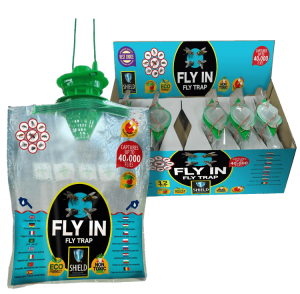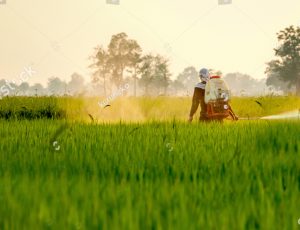
The little fire ant Wasmannia auropunctataGal Cohen – Expert pest control consultant The little fire ant, as her name suggests, is very “little”, only about
Home » Professional Information » Flies – Exterminating the housefly

Gal Cohen – Expert pest control consultant
The housefly is a flying insect which acts as a vector (carrier) of many diseases, and is abundant mostly around farms, and in surroundings rich with moist organic materials.
The female lays her white elongated eggs in batches of 100-150 directly on the larvae’s food, or close by. Eggs are also laid in open drains and running sewers. A female can lay 1,000-1,500 eggs in her lifetime.
The housefly needs high temperatures to breed and the female usually lays the eggs in bird droppings, sludge, animal excrements, and areas where moist organic waste is collected.
Larvae hatch from the eggs, which eventually develop into adult flies.
The larvae develop primarily in garbage dumps, cow and horse dung, and human and other animal feces.
Its lifecycle span relies on various factors, and mainly on the temperature. In optimal conditions, it’s evolution, from egg to adult fly, takes seven days. The average life span is one to three weeks, depending on surrounding conditions.
Flies feed on liquid or semi-liquid substances, but are capable of scraping and dissolving solid foods like sugar crystals.
Disease agents are transmitted to the person’s food or body by the fly’s contact, vomitus, and feces.
At any given time during the hot season, breeding processes of early-stage flies (eggs and larvae) constitute about 80% of the overall housefly population in any given area. Only about 20% develop into adult flies which constantly harass human beings and animals, and endanger their health.
Therefore, as part of the pest control process, it is best to begin first and foremost with prevention treatment against the development of larvae into flies, and only after that, exterminate the adult flies which infest the area.
It should be noted, that it is easier to discover the location of the larvae and exterminate them effectively, than attract the adult flies and/or exterminate them.
Animal surroundings:
The toxicity of these substances for humans and animals is low and they are effective and safe for use.
Another option recommended for exterminating adult flies, is spreading reusable and disposable baits to supplement the treatment (definitely not as the only solution).
Human surroundings (home yards, porches, and outside restaurants or garbage rooms)
Please remember that an appropriate and integrated treatment can definitely control the fly population in the summer, but should not be expected to eliminate the infestation completely. A desired outcome will prevent the transfer of diseases and enable a good quality of life around the yard and outside the house.

The little fire ant Wasmannia auropunctataGal Cohen – Expert pest control consultant The little fire ant, as her name suggests, is very “little”, only about

The Asian tiger mosquitoGal Cohen – Expert pest control consultant The Asian tiger mosquito is an invasive species native to the tropical areas of Asia,

The German cockroach (Blattella germanica)Gal Cohen – Expert pest control consultant It usually arrives as a hitchhiker, mainly in different food deliveries, inside cases of

SHIELD offers an exclusive opportunity for distributors seeking to grow and expand their business.
Our products have high year-round demand and sell at various convenient stores.

SHIELD offers an exclusive opportunity for distributors seeking to grow and expand their business.
Our products have high year-round demand and sell at various convenient stores.
User Agreement | Privacy
All rights reserved